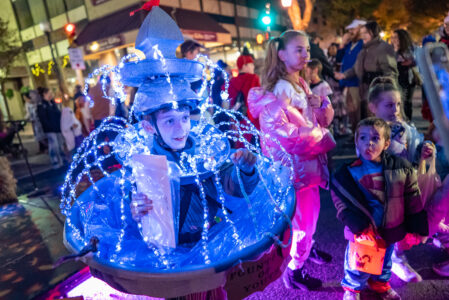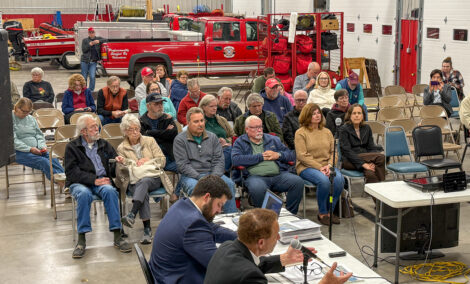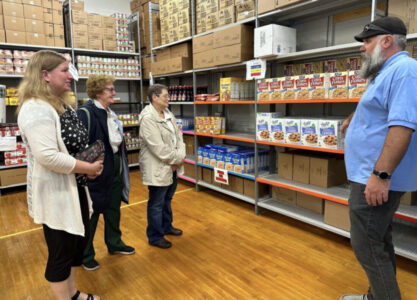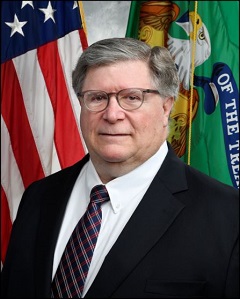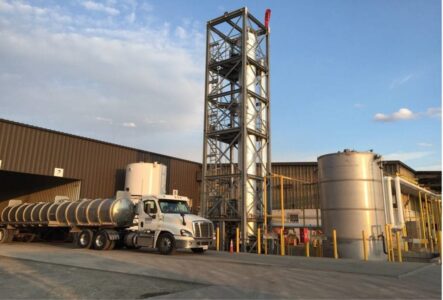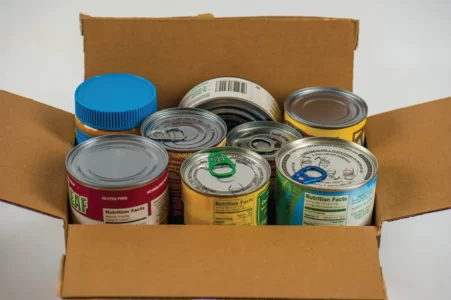Green Light-Go funds helping Williamsport with traffic upgrades

Traffic calming, safety improvements for pedestrians, bicyclists and motorists, alike.
These are some of the investments in streets and intersections in Williamsport that began and will continue through the summer, early fall and into 2026.
Mayor Derek Slaughter sat down with the city administrative team recently for a video interview on all kinds of projects, and was asked to update readers of the Sun-Gazette on the city streets and intersections.
The city received the bulk of funding for major projects through the state “Green Light-Go,” program administered by the state Department of Transportation (PennDOT). This is a competitive state grant program designed to improve the efficiency and operation of existing traffic signals located in the Commonwealth of Pennsylvania. Established by Act 89 of 2013 and revised by Act 101 of 2016, the program is administered by PennDOT’s Bureau of Maintenance and Operations. The program is a reimbursement grant program and applicants are required to provide a minimum 20% match.
“We resurfaced Little League Boulevard,” Slaughter said, referring to the recently finished paving project from Mulberry Street to Walnut Street.
The Green Light-Go grant received also will “redo signals and intersections,” he said.
The signals and intersections targeted for revamping next year are at Market Street and Hepburn Street, said Bill Scott, city engineer. “They are under design currently,” he said.
All of this was in coordination with the City Council and discussed at committee and council level meetings where the public had opportunity to comment.
These changes go back to vehicle, pedestrian and bicycle safety and a purposeful strategy to design streets for traffic calming and thereby give merchants and others more of a chance that drivers slow down and see what they have to offer rather than drive by without looking one way or the other.
As an example of such improvements, the city has just completed its work at the intersection of Fourth and Mulberry streets. This will lead into the planned two-way conversion of Fourth Street, between Basin Street and Mulberry Street, Slaughter said.
“That will occur later this year,” Scott said, adding it was just awarded to a contractor.
That’s a streetscape project with curbing, sidewalks, lights, he said. It’s in the Old City section, so named as it was the first place where settlers had residences and businesses as early as the late 1700s.
That same vision project jumps over to the west on Campbell Street between Third and Fourth streets, which is considered a streetscape project, Scott noted. That is one of the finalizations of the Pathway to Health, a project that has been taking place over a number of years to more easily connect the UPMC North Central Pennsylvania campus to Interstate 180, via Maynard Street, Third Street, Campbell Street, Little League Boulevard and Walnut Street.
There is another area on Washington Boulevard at the crossing at Elizabeth Street that will have a crosswalk added to it for pedestrian safety and easier access to the Brandon Park facilities. The proposed crosswalk is eyed to be similar to what Broad Street is like in Montoursville, Scott noted.
Meanwhile, the two-way conversion downtown has been discussed for a number of years for traffic. It is coming to an area of Fourth between Basin and Mulberry streets.
“As we convert these roads to two-way, we have to be mindful that if a road feels as if you could drive fast on it, that’s where we have to consider it to be a two-way design,” Slaughter added. “We all know that if it’s two-way, it slows traffic down,” he said. “As we design this, we have to be really very mindful that we want traffic calming included,” he said. This is not just going to be for the safety of motorists, pedestrians and bicyclists, “but it also lets people see what our downtown has to offer.”
“If you are going slower, you see the businesses and you are more likely to pull over and see what’s going on.”
“The number one concern is the safety of the residents,” he said. “So, as we’re converting these, we want to look at the design to make sure that it is designed in a way, but it’s safe for everyone.”

